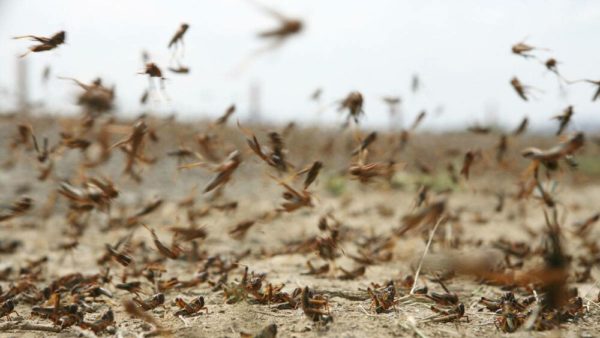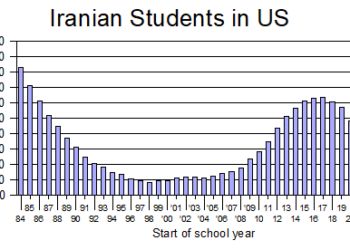May 17, 2019

Locusts are now gobbling up crops in six of Iran’s 31 provinces, with the worst hit appearing to be Sistan va Baluchestan in the far southeast.
The other provinces hit are all in the south—Bushehr, Fars, Hormuzegan, Khuzestan and southern parts of Kerman.
The locust has come just as many citizens are trying to recover from the floods of March and April.
Iran is hit periodically by locust swarms. This one is being described as the worst in the last four decades.
But despite Iran’s susceptibility to locusts, some suspect there is a political conspiracy involved in their arrival. Mohammad-Reza Dargahi, head of the Iran Plant Protection Organization, told the Mehr news agency the locusts have come mainly from Saudi Arabia and said it was too soon to determine if there was an intention behind the arrival of the swarms.
And Majlis Deputy Ali Akbari of Shiraz said he suspected the locust swarms were a form of bioterrorism unleashed on Iran by “other countries” in the region. “There is the possibility of bioterrorism given the enmities that some neighboring countries have toward the Iranian people,” Akbari said. “These countries spare no effort to inflict economic, political and social loss on the Iranian people.”
Dargahi said his organization needed a much larger budget to combat the locusts. He said he was only able so far to attack the locusts in 20 percent of the area they threaten in the six provinces.
On May 14, the UN Food and Agricultural Organization (FAO) said conditions were so good for the locusts in parts of Iran that a second generation of locusts began hatching in mid-May, which could produce new adult swarms in June if Iran did not attack them now.
The FAO said the swarms are impacting crops from Sudan eastward to the India-Pakistan border.
While there has been panicked talk of famine caused by the locusts, they are not yet in Iran’s main croplands. The Tehran Times said the locusts have not so far caused any serious loss of crops. But that may be difficult to accurately determine as many farming areas of the south have lost their crops to the recent floods.



















